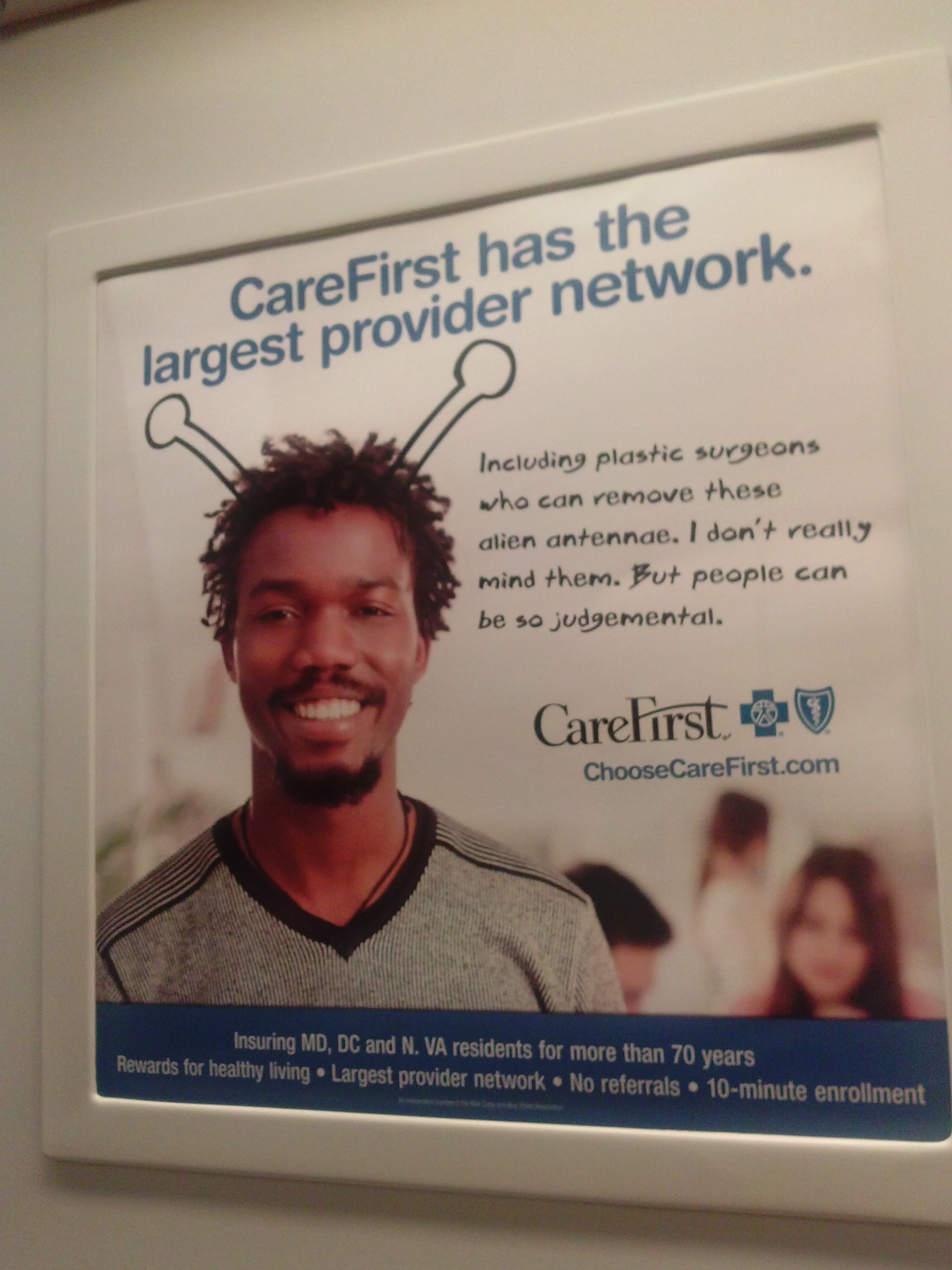This Photo is Worth a Thousand Words Explaining Obamacare’s Perverse Incentives
One theme of NCPA’s Health Policy Blog is that health insurers in Obamacare’s exchange plans have perverse incentives to attract healthy patients and deter sick ones from enrolling. This is because the law forbids insurers from charging premiums that reflect applicants’ likelihood of incurring high medical costs. Although there are risk-mitigation mechanisms to overcome this, they do not appear to be adequate.
If this photo does not tell us that insurers want healthy people to apply, I don’t know what will.
A little context: I took this photo in a train on the Metro in Washington, DC, just a few days ago. CareFirst, which holds the Blue Cross Blue Shield license in Maryland, is the dominant insurer in the metropolitan area. It has major market share in the Federal Employees Health Benefit Plan (FEHBP). Open enrollment for the FEHBP ran from November 10 through December 8. The Metro is the perfect place to attract public servants’ attention, so CareFirst buys lots of advertising space during FEHBP open enrollment. Those ads usually feature middle-aged actors, who project a staid bureaucratic image as they peruse their choices for the upcoming year.
FEHBP open enrollment is closed, but Obamacare exchange enrollment is open through February 15. So, the ads have changed. Let’s examine this fellow. Does he really care about access to high-quality care? (CareFirst’s provider network is large because of the FEHBP, whose beneficiaries do demand good access.) If he really does think that aliens have implanted antennae into his head, he needs psychiatrists, not plastic surgeons. Of course, he doesn’t think he is wearing alien antennae. He is just goofing around.
If Obamacare were designed for sick people, CareFirst would feature cancer patients, not frat boys, in its ads.



It’s actually healthy to have alien antennae? Now they tell me.
I just had mine removed.
Bummer.
(But I still have my nictitating membranes.)
But we were relying on you to communicate the aliens’ comments to the blog!
“the law forbids insurers from charging premiums that reflect applicants’ likelihood of incurring high medical costs” would read “the law forbids insurers to charge premiums that reflect applicants’ likelihood of incurring high medical costs” in Standard American English.
Google Shakespeare or ponder: if I “bid you to dine with me” would I not also “forbid you to dine with me”?
Quite right. Thank you.
I guess it’s better than the radio ad featuring talking dogs and cats exhorting their owners to sign up on the exchanges.
Something else that I noticed about this photo. Not only is it of a young person, it’s also displayed on a train. Most of the people on the train are healthy enough to work — which is probably why they ride the train. Do you think this company (or any insurance company) sent brochures to doctors offices or hospitals to hand out to their patients? I suspect not.
I don’t blame these companies for targeting their advertising dollars where healthy people are most likely to see them. It’s the system that was dealt them by the PPACA.
It’d the midnight train to the Obamacare Enrollapalooza!